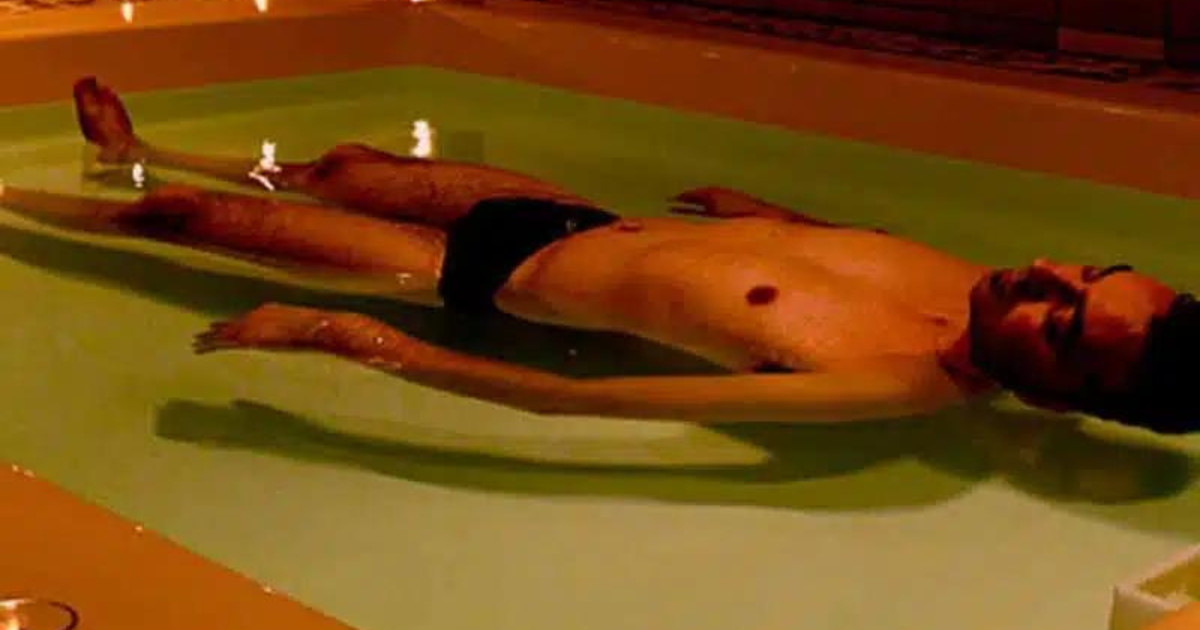A sensory deprivation tank is a chamber like structure. Imagine being in one bath tub and being able to have the same type of bath tub paced over the top of you to create a cocoon.
This may sound challenging for someone who is claustrophobic, but rest assured, you have full control of the sliding door to get in and out.
Inside the tank there are normally soft lights for ambiance which allow you to see enough to find your way around, these you can normally turn off if you want to.
Gentle music, which you can also turn down if you want to, and all the mod cons that make floating in one of these tanks a five star experience.
Why Consider using a Sensory Deprivation Tank?
We are becoming more and more aware of the importance of eating good quality foods. Organic fruits and vegetables are significantly better for you than those grown or sprayed with chemicals.
GMO foods are getting more and more backlash from the consuming public. And the awareness of alkaline foods is increasing.
But is that all that there is to being healthy? Eating good quality foods? In short, no. There is so much more to maintaining a healthy body than the food you consume.
Did you know that your mental and emotional state has such a big role to play in your digestion? Have you ever been in an argument and lost your appetite?
Your body knows when it is not the right time to eat. And if you are not in a good space at that time, your appetite is likely to be suppressed. This is why it is so critical that you look after the spiritual or emotional side of yourself; what I like to refer to as your energetic side.
See, it doesn’t matter how good the food is that you have on your plate if your body is not connecting with it the way that it should. You could have the most nutritious superfoods on your plate and they will do you more harm than good if you are not in the right head-space.
Many healing modalities have been around for hundreds, if not thousands of years, like meditation, acupuncture, energy healing, and more.
These all work to realign your energy in one sense or another. They help you to alkalize your thoughts, your emotions, and your energy. And this is where I found an interest in float tanks; also known as sensory deprivation tanks.
My First Float Session
Recently, a friend of mine sent me a link to buy a voucher to experience a sensory deprivation tank, otherwise known as a flotation tank therapy. The idea of using a float tank intrigued me. I had heard about float tanks but didn’t really know much about them or their purpose. What is a Sensory Deprivation Tank? 1
A Sensory Deprivation Tank is a capsule/pod that has been designed to restrict both light and sound to help your brain completely disconnect from any distractions.
You effortlessly begin to re-connect with your body’s natural deep relaxation response. This allows the neurons in your brain stem to communicate, which improves brainwave frequency and it turns out that using sensory deprivation tanks provides a unique way of healing.
Float tanks were first used in 1954 by John C. Lilly to study the sensory deprivation effects on the body. John C. Lilly was psychoanalysis at the National Institute of Mental Health.
In 2013, flotation tanks became very popular in Europe, followed by the United States. Float tanks are not common in Melbourne, Victoria, where I live. At the time of writing this article, I found only two companies that have float tanks.
When lying in a float tank, your body is completely supported and held by half a tonne of Epsom salts (600 kg of magnesium sulphate) which creates buoyancy and you float effortlessly. The Epsom salts contain essential minerals that help you relax and relieve you of any tension.
Fresh oxygen and magnesium (which are in abundance in Epsom salts) stimulate your body’s responses and assist with healing. The water temperature is lukewarm or body temperature and helps with the feeling of weightless. I imagine this is what it must be like to float in the Dead Sea, in Israel.
Natural Healing
Sensory deprivation tanks provide a non-invasive, drug-free, alternative medicine that provides a unique way of healing. I encourage you to give it a go.
Flotation tank therapy is known as an alternative medicine as it has numerous health benefits. It’s used primarily for the treatment of muscle tension, hypertension, migraines, rheumatoid arthritis and other disorders accompanied by chronic pain.
It assists in body detoxification as magnesium draws toxins to the skin. It also helps reduce anxiety and alleviate depression by increasing our pleasure hormones in the brain.
Flotation Tank Therapy is really good for stress reduction and provides a unique way of healing.
Brainwaves
Our brains are fascinating. Five main electrical currents are creating vibrational frequencies that effectively look after our whole body. The difference vibrations in our brains are known as brainwaves. The Delta, Theta, Alpha, Beta, and Gamma brainwave have a different function. 2
- Delta (0.5 – 3 Hz) brainwaves are for deep sleep, and we are completely unconscious. This is when we experience dreamless sleep and our body is healing.
- Theta (3 – 8 Hz) brainwaves are deep relaxation, light sleep and dreaming which enhance hypnosis, meditation, stimulate visualisation and mental imagery. Theta brainwaves have been linked to unconscious problem solving.
- Alpha (8 – 12 Hz) brainwaves are the calm, relaxation vibrational frequencies and are essential for creativity, learning, and relaxation. High Alpha brainwave frequencies are used by high performing athletes and entrepreneurs
- Beta (12 – 38 Hz) brainwaves function mostly during the day and are essential for emotional and mental health. Beta brainwaves are responsible for effective problem solving, attentiveness, focus, and concentration.
- Gamma (38 – 42 Hz) brainwaves vibrant at a high frequency which has been linked to learning, the formation of ideas, language processing, and creativity.
Learning and Creativity
Creativity thrives when there is uninterrupted solitude. In the pod, the experience is so peaceful which allows your mind to activate and embrace creative visualization. It allows your mind to think and explore opportunities that you might not necessarily have made time for before.
Sensory deprivation tanks have been referred to as “modern learning environment” because they encourage the mind to access resources that are stored in the unconscious mind. This engages metal clarity which evolves into personal motivation and productivity.
The flotation tank helps our minds to engage the Theta and Alpha brainwaves to provide deep relaxation. They are used for mediation and creative visualisation techniques.
By disconnecting from environmental stimulation we can allow our minds to rest and rejuvenate. It enhances emotional intelligence and mindfulness.
My Experience
Okay, so I have been meditating for a while now and sometimes find it hard to concentrate due to the environmental stimulation. I experienced the most amazing feeling from resting in the silence and stillness inside my deprivation tank. This is completely different to my previous meditation experiences.
It’s a strange sensation to be completely immersed and floating effortlessly. It was challenging to just allow myself to complete surrender. I found that my shoulders were hunched and after a while began to cramp a bit so I would have to focus on trusting the environment.
As I floated in the tank I noticed that my heart rate slowed and my breathing was shallow. I remember focusing on my thoughts and encouraged positive loving thoughts into my consciousness.
This time in the tank allowed me to experience an in-depth reflection in my life. I drifted off into a relaxed, lucid doze.
The time passed slowly and quickly, it was quite surreal. I had no sense of time and was surprised to find out that I had been in the tank for 2 hours. Afterward, I felt a sense of calm and rejuvenation. I felt like my anxiety and worries had melted away. I felt vibrant and refreshed.
Using bath bombs at home is a nice, cheap, relaxing alternative, but nothing compares to actually using a float tank.
Without experiencing it for yourself, you’ll never truly answer the question “What is a Sensory Deprivation Tank?” for yourself. Every experience is a little different.
I encourage you to book a float tank session. And at the very worst you’ll give yourself a break from the chaos we call life, rest and rejuvenate.
Reference
- “Sensory Deprivation Tank Science: How ‘Floating’ Works & Proven Benefits” – J. Levy, 19 September 2021 [Dr. Axe] [Archive] ↩︎
- “What are Brainwaves?” – Brainworks Staff, Last checked 1 March 2024 [Brainworks Neurotherapy] [Archive] ↩︎
Last Updated on 5 months by D&C Editorial Team




